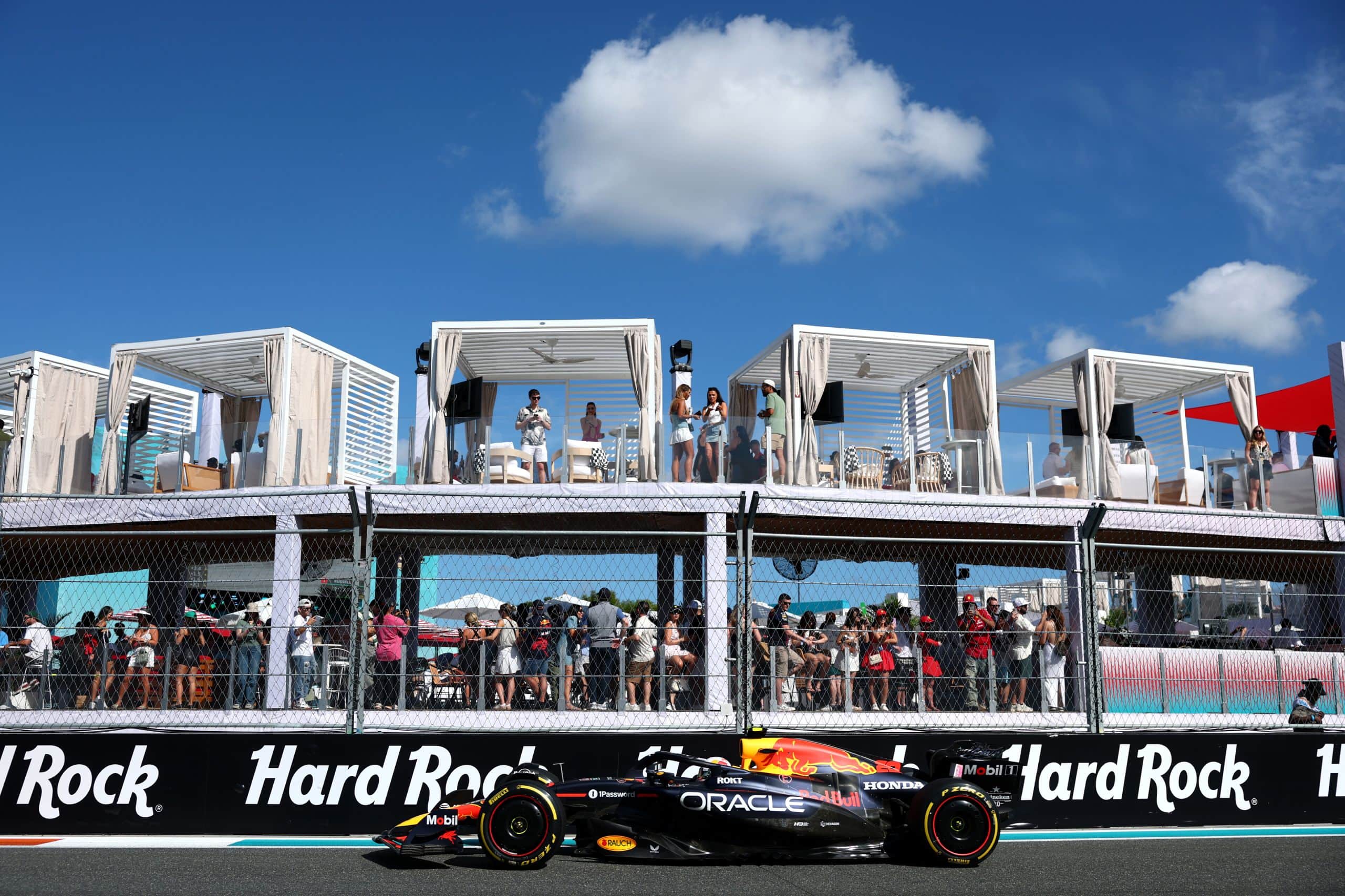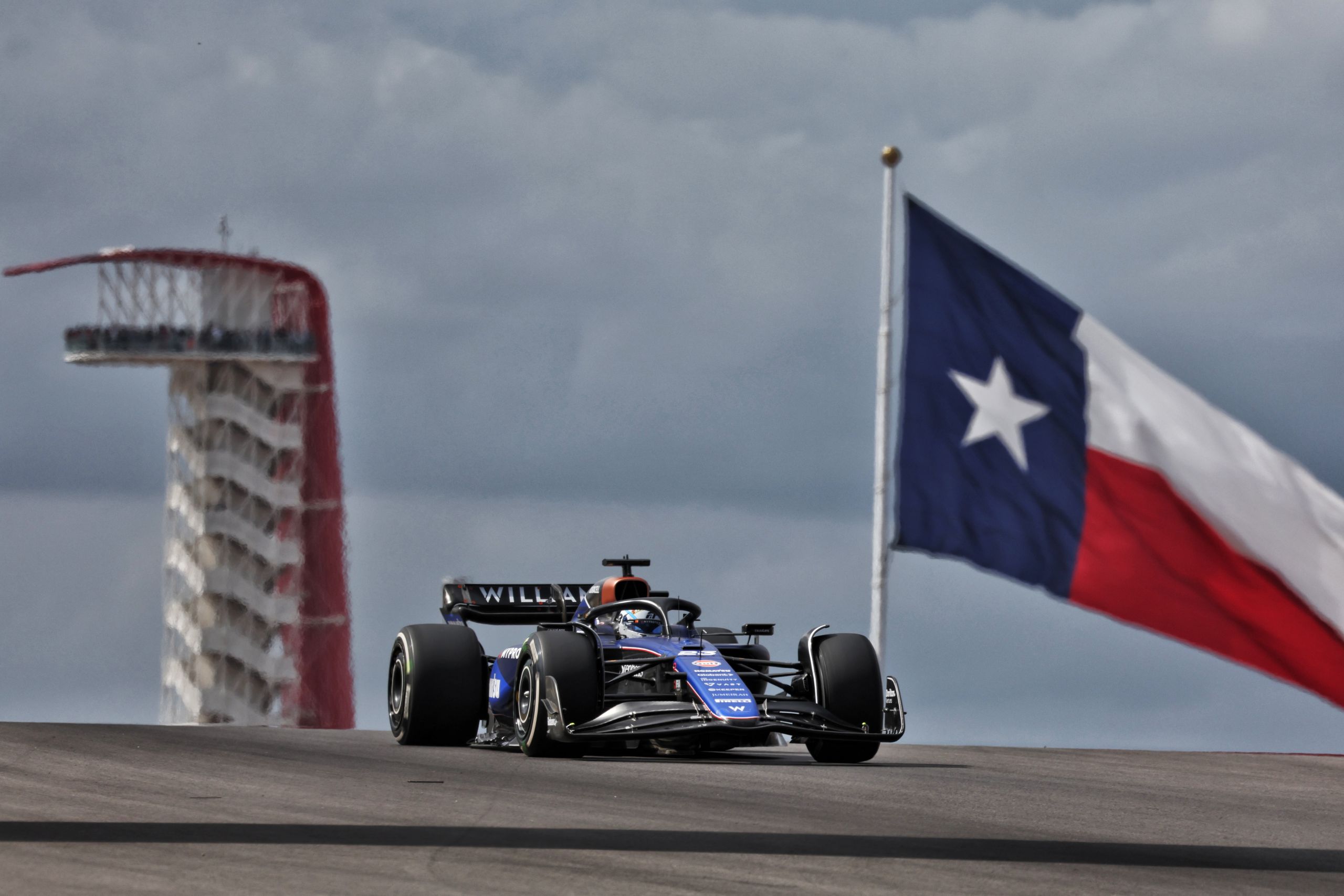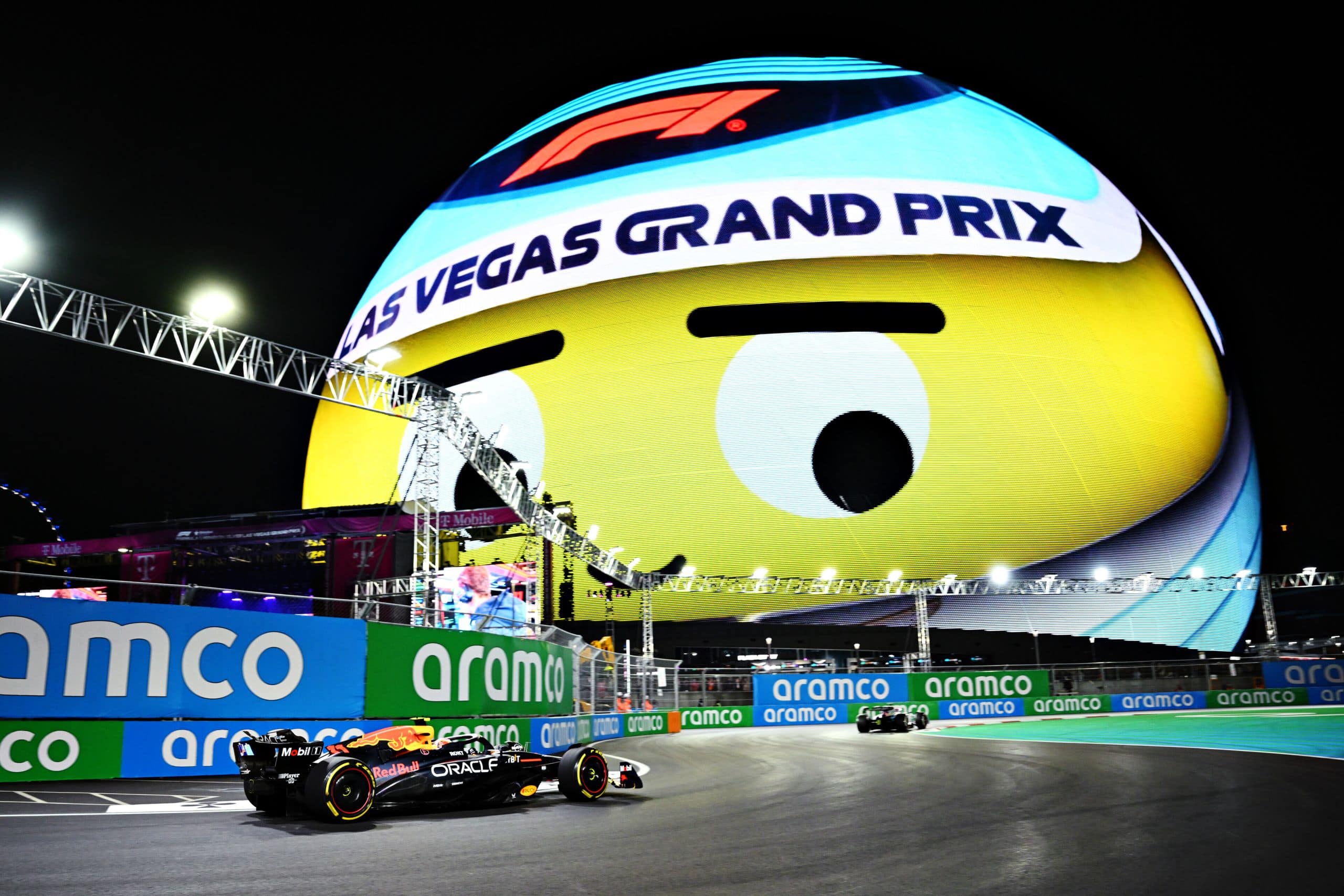How Many F1 Races Are In The US?
There are three Formula 1 races held in the United States: the Miami Grand Prix, the United States Grand Prix in Austin, and the Las Vegas Grand Prix. This makes the US the only country on the F1 calendar with three races in a single season. Each event takes place on a different type of circuit, offering unique challenges and creating strong demand from fans and sponsors alike.
Formula 1’s growing presence in the US reflects the sport’s strategic expansion into new markets and its increased popularity through digital media and streaming platforms. With three races spread across the east, south, and west of the country, Formula 1 now enjoys year-round visibility across America.
Which F1 Races Are Held in the US?
The United States hosts three Formula 1 races on the 2025 calendar. Each race offers a distinct mix of atmosphere, circuit layout, and fan engagement. From the vibrant streets of Miami to the bright lights of Las Vegas and the technical layout of Austin’s Circuit of the Americas, each event adds something different to the championship…
Miami Grand Prix
Circuit: Miami International Autodrome (around Hard Rock Stadium)
First held: 2022
Track type: Temporary street circuit

The Miami Grand Prix is the newest American race to join the Formula 1 calendar, debuting in 2022. It takes place on a custom-designed layout built around the Hard Rock Stadium in Miami Gardens, Florida, home to the NFL’s Miami Dolphins.
While technically a street circuit, the Miami track includes a mix of fast straights, tight corners, and elevation changes thanks to creative construction around existing infrastructure. The layout features 19 corners and a long back straight leading into a heavy braking zone, which often sets the stage for overtaking.
Miami is also known for its off-track spectacle. With a backdrop of palm trees, marina-themed paddock areas, and strong celebrity attendance, the event has quickly become one of the most media-heavy and high-profile races on the calendar.
Despite initial criticism about track surface quality in its debut year, organisers made significant improvements, including full resurfacing and barrier changes to improve grip and driver safety.
United States Grand Prix (Austin)
Circuit: Circuit of the Americas (COTA), Austin, Texas
First held: 2012 (modern era)
Track type: Permanent racing facility

The United States Grand Prix in Austin is widely regarded as the spiritual home of modern Formula 1 in America. Since its first running in 2012, the event has become a staple of the F1 calendar, thanks to the high-quality track layout and growing US fanbase.
Circuit of the Americas is a purpose-built facility that combines elements from some of the most iconic circuits in the world. Its 5.5-kilometre layout features a steep climb into Turn 1, known for creating dramatic first-lap moments. From there, the track flows through a sequence of high-speed esses inspired by Silverstone’s Maggotts-Becketts section, followed by a variety of technical corners and a long back straight that offers prime overtaking opportunities.
The track surface and layout make COTA a driver favourite. Its fast, flowing nature challenges tyre management, setup precision, and driver consistency. The race typically draws one of the largest crowds of the season, helped by Austin’s reputation as a music and culture hub, which makes the event popular both on and off track.
Las Vegas Grand Prix
Circuit: Las Vegas Strip Circuit
First held: 2023 (current layout)
Track type: Street circuit including the famous Strip

The Las Vegas Grand Prix is Formula 1’s most visually striking event, held at night on a circuit that includes a high-speed blast down the iconic Las Vegas Strip. Reintroduced in 2023 with a brand-new layout, the race has quickly become one of the most-watched and discussed events on the calendar.
Unlike traditional circuits, the Las Vegas layout was designed with spectacle and speed in mind. With long straights, sweeping corners, and minimal elevation change, the track demands aerodynamic efficiency and straight-line speed. Cars reach over 340 km/h on the Strip, and the challenge lies in balancing low drag with enough grip for the slower, technical sections.
Racing under the lights in front of world-famous casinos and landmarks, the Las Vegas GP brings a showbiz element that sets it apart. The event is also logistically complex, given the need to transform public roads into a racing venue. Still, its debut delivered exciting battles, unpredictable tyre strategies, and plenty of overtaking.
How many Formula 1 race tracks are in the US?
The United States has hosted Formula 1 races at more circuits than any other country, with a total of ten different tracks featured in the official World Championship since 1950. While only three are active in 2025, the sport’s long history in America has seen events held in a wide range of locations.
Here are the Formula 1 tracks that have been used in the US:
- Miami International Autodrome (Florida) – Active since 2022
- Circuit of the Americas (COTA) (Texas) – Active since 2012
- Las Vegas Strip Circuit (Nevada) – Active since 2023
- Indianapolis Motor Speedway (Indiana) – Hosted F1 from 2000 to 2007
- Watkins Glen International (New York) – Hosted F1 from 1961 to 1980
- Long Beach Street Circuit (California) – Hosted F1 from 1976 to 1983
- Detroit Street Circuit (Michigan) – Hosted F1 from 1982 to 1988
- Phoenix Street Circuit (Arizona) – Hosted F1 from 1989 to 1991
- Fair Park Street Circuit (Dallas) (Texas) – Hosted one race in 1984
- Caesars Palace Circuit (Nevada) – Hosted races in 1981 and 1982
- Sebring International Raceway (Florida) – Hosted the inaugural US GP in 1959
- Riverside International Raceway (California) – Held one race in 1960
Only Miami, Austin (COTA), and Las Vegas are on the current calendar, but the legacy of American venues shows how important the market has become for Formula 1. Each new event continues to build on that heritage with modern infrastructure and entertainment-driven formats.
Why are there so many F1 races in the US?
Formula 1 has made a deliberate push to expand in the United States due to a surge in popularity, strategic commercial goals, and strong demand from fans and sponsors. For decades, the US market remained relatively untapped compared to Europe, but that changed dramatically in the 2020s.
Several key reasons explain the growth to three races on the US calendar:
- Growing fan base: The rise of Netflix’s Drive to Survive introduced millions of new American fans to the sport, sparking a cultural shift and renewed interest across the country.
- Commercial opportunity: The US offers a massive sports and entertainment market. Hosting races in different regions (East Coast, South, and West) maximises exposure and ticket sales.
- Liberty Media ownership: Since acquiring Formula 1 in 2017, Liberty Media has prioritised expansion in its home country, with the Las Vegas Grand Prix seen as a flagship event for global marketing.
- Iconic venues and backdrops: Each race provides a distinct setting. Miami brings glamour, Austin delivers classic motorsport energy, and Las Vegas offers a unique night race spectacle on one of the world’s most recognisable streets.
Formula 1’s expansion in the US reflects not just growing demand but also a long-term investment in building a sustainable fanbase. Hosting multiple races in one country is rare, making the US a central pillar of the modern F1 calendar.
Which countries have more than one Formula 1 race?
The United States is currently the only country on the 2025 Formula 1 calendar with three races, but it is not the only nation to host multiple Grands Prix in a single season. Other countries have also held two races in recent years, particularly during the disrupted 2020 and 2021 seasons.
Here are examples of countries that have hosted more than one F1 race in a single year:
- Italy: Regularly hosts the Italian Grand Prix at Monza and has also held races at Imola (Emilia Romagna Grand Prix) and Mugello in recent years.
- Austria: The Red Bull Ring has hosted both the Austrian Grand Prix and the Styrian Grand Prix.
- Great Britain: In 2020, Silverstone hosted both the British Grand Prix and the 70th Anniversary Grand Prix.
- Germany: The Nürburgring and Hockenheim have alternated hosting duties, and both circuits have appeared in the same calendar during special circumstances.
- Bahrain: In 2020, it hosted two races using different circuit layouts at the Bahrain International Circuit.
Multiple races in one country are usually the result of exceptional scheduling needs, such as pandemic disruptions or a desire to boost local fan engagement. In contrast, the US presence reflects strategic growth and long-term market expansion.
F1 in the US: Final Thoughts
The United States has become a key market for Formula 1, with three high-profile races showcasing the sport’s reach and appeal. From the glamour of Miami to the tradition of Austin and the spectacle of Las Vegas, each event adds something distinct to the calendar. Strong fan support, top-tier facilities, and enthusiastic local engagement have made the US a permanent fixture in F1’s global growth strategy. Whether you are new to the sport or a long-time follower, the US Grands Prix deliver world-class racing and unmatched entertainment value.
Analysis for this article was provided by Virgin Games, a leading entertainment brand known for its online casino and gaming expertise, from the high-speed thrills of Formula 1 to the spinning excitement of online slots.
From F1 news to tech, history to opinions, F1 Chronicle has a free Substack. To deliver the stories you want straight to your inbox, click here.
For more F1 news and videos, follow us on Microsoft Start.
New to Formula 1? Check out our Glossary of F1 Terms, and our Beginners Guide to Formula 1 to fast-track your F1 knowledge.
F1 in the US FAQs
How many Formula 1 races are there in the US?
There are three Formula 1 races held in the United States during the 2025 season: the Miami Grand Prix, the United States Grand Prix in Austin, and the Las Vegas Grand Prix. This makes the US the only country on the calendar to host three races in one season.
Why does the US have three F1 races?
Formula 1 has seen significant growth in the US, especially with the popularity of Netflix’s “Drive to Survive” and strong interest from American fans and sponsors. The addition of more races is a direct response to market demand, helping F1 build a deeper presence in one of the world’s biggest sports markets.
Which US F1 track is the most popular?
Circuit of the Americas in Austin is often considered the most popular US venue among drivers and fans. Known for its elevation changes, challenging corners, and strong fan attendance, the track has delivered consistently exciting races since its debut in 2012.
Are all three US F1 races different?
Yes, each of the three US F1 races offers a unique experience. Miami is known for its celebrity-filled atmosphere and stadium setting, Austin delivers classic racing on a permanent circuit, and Las Vegas brings a glitzy night race down the famous Strip with high-speed drama and neon lights.
Has the US always hosted multiple F1 races?
No, having three races is a recent development. While the US has a rich history in Formula 1 with past venues like Watkins Glen and Long Beach, multiple races in one season were rare until the recent surge in American interest. The last time the US had more than one race consistently was in the 1980s.